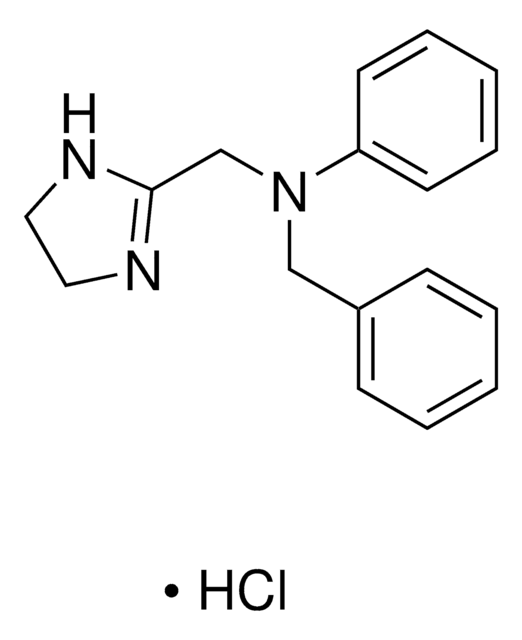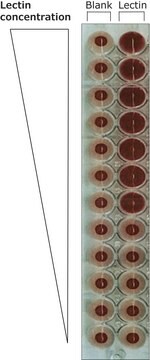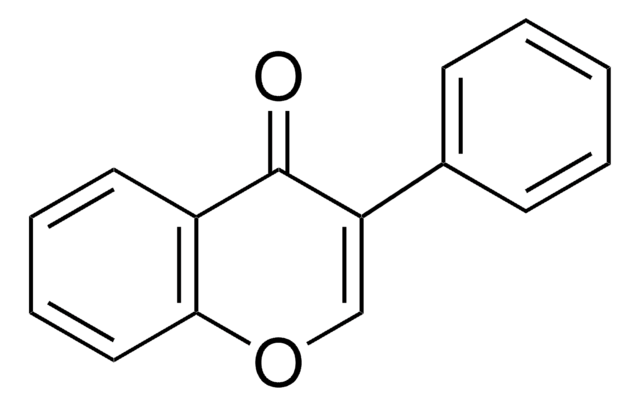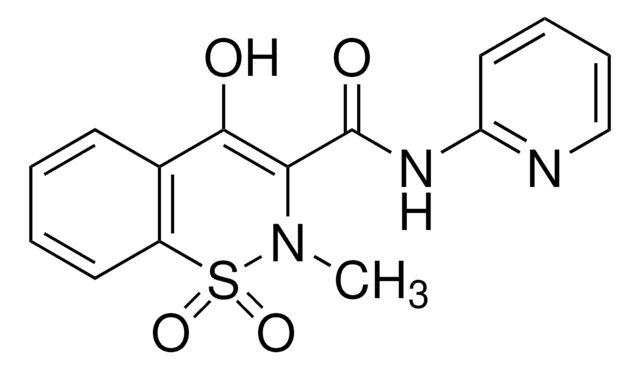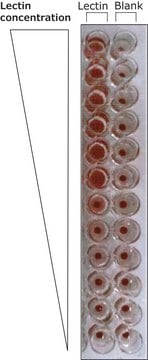SCP0184
Mastoparan, Hornet Vespa basalis
Anmeldenzur Ansicht organisationsspezifischer und vertraglich vereinbarter Preise
Alle Fotos(1)
About This Item
Empirische Formel (Hill-System):
C78H138N20O16
Molekulargewicht:
1612.05
UNSPSC-Code:
12352200
NACRES:
NA.32
Empfohlene Produkte
Assay
≥95% (HPLC)
Form
lyophilized
Zusammensetzung
Peptide Content, ≥70%
Lagerbedingungen
protect from light
Lagertemp.
−20°C
Amino Acid Sequence
Leu-Lys-Leu-Lys-Ser-Ile-Val-Ser-Trp-Ala-Lys-Lys-Val-Leu-NH2
Anwendung
Mastoparan B (LKLKSIVSWAKKVL-NH2), a cationic decapeptide amide toxin, is used to study its mechanisms of histamine release and edema inducing and haemolytic activities.
Lagerklassenschlüssel
11 - Combustible Solids
WGK
WGK 3
Flammpunkt (°F)
Not applicable
Flammpunkt (°C)
Not applicable
Analysenzertifikate (COA)
Suchen Sie nach Analysenzertifikate (COA), indem Sie die Lot-/Chargennummer des Produkts eingeben. Lot- und Chargennummern sind auf dem Produktetikett hinter den Wörtern ‘Lot’ oder ‘Batch’ (Lot oder Charge) zu finden.
Besitzen Sie dieses Produkt bereits?
In der Dokumentenbibliothek finden Sie die Dokumentation zu den Produkten, die Sie kürzlich erworben haben.
Structure and biological activities of a new mastoparan isolated from the venom of the hornet Vespa basalis.
Ho CL, Hwang LL.
The Biochemical Journal, 274, 453-456 (1001)
C L Ho et al.
Toxicon : official journal of the International Society on Toxinology, 34(9), 1027-1035 (1996-09-01)
Mastoparan B (MP-B) is a cationic tetradecapeptide isolated from the black-bellied hornet (Vespa basalis) venom. It has a primary structure (LKLKSIVSWAKKVL-CONH2) distinct from other vespine mastoparans. The peptide caused a dose-dependent swelling in rat hind paw and showed a potent
C L Ho et al.
Toxicon : official journal of the International Society on Toxinology, 39(10), 1561-1566 (2001-08-02)
Mastoparan B (MP-B) is a cationic tetradecapeptide (LKLKSIVSWAKKVL-CONH(2)) isolated from the venom of the Taiwan hornet Vespa basalis. Unlike other vespid mastoparans, the peptide is capable of inducing short-term hypotension and causes hemolysis in animals. This study was aimed to
H M Yu et al.
Biochemistry and molecular biology international, 29(2), 241-246 (1993-02-01)
Mastoparan B, a tetradecapeptide toxin (LKLKSIVSWAKKVL) isolated from the hornet (Vespa basalis) venom, was synthesized chemically. The physical and biological properties of both the native and synthetic peptides were studied and proved to be identical. Mastoparan B was found to
Unser Team von Wissenschaftlern verfügt über Erfahrung in allen Forschungsbereichen einschließlich Life Science, Materialwissenschaften, chemischer Synthese, Chromatographie, Analytik und vielen mehr..
Setzen Sie sich mit dem technischen Dienst in Verbindung.